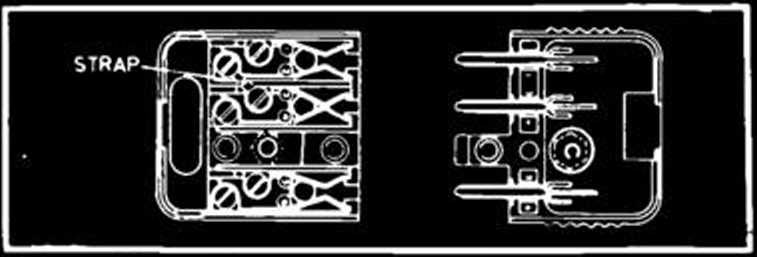5196106339
Finding your way in
Telephone toyland
Now that there are so many telep hones, modems, faxes and other Communications devices available for connection to the telephone network, it’s very useful to have a basie understanding of telephone operation and the correct connections. Here’s the lowdown.
by STEWART FIST
It’s getting much harder these days to tell a telephone from a Computer. The trąditional role of those twin wires link-ing your home and Office to the outside world has been changing — and things will change even morę in the Corning years.
The telephone system is being modi-fied from both ends. The traditional telephone handset is being supple-mented by communicating computers, fax machines, teletext and modems, while at the exchange, digital transmis-sion and switching technologies are tak-ing the system in new directions. Packet Switching and Datel services have been with us for many years, and ISDN (In-tegrated Services Digital Network) is due for introduction early in 1988.
When you look back over old issues of Electronics Australia or any of the other electronics and Computer maga-zines published in Australia, you find very few articles deal with telephones. Telecom have been very effcctive in erecting a “no trespass” sign over Australia^ telephone system, and their mo-nopoly control has ensured that very lit-tle has been published.
Consequently, many of us have leamed about radios, amplifiers, televi-sion, computers, and even satellite Communications, without knowing morę than the basics about the most ubiqui-tous and most popular of all our Communications technologies.
Now that Telecom’s total control of the telephone system has been broken we need to know morę. You can now connect non-Telecom modems, handsets and other equipment to the telephone lines w ithout breaking the law ... as long as these instruments comply with Telecom’s technical specifications.
This is fair enough. Telecom have a responsibility to ensure that users don’t accidentally or inadvertently feed 240 volts down the linę and electrocute a few exchange workers. From the experi-menter’s point of view, it is probably also best if they don’t cali attention to their trials by burning up expensivc switching gear!
So, let’s havc a look at the telephone system and try to understand the dos and don’ts.
A standard single telephone set-up will usually have two pairs of incoming wires within the one cable. They are co-lour coded red/black and blue/white, but only the blue/white pair of these is 'actually used.
There is a DC voltage (of about 50V at the household end) across this pair, with the white having a positive polari-ty. The lines terminate at a standard 6-point Telecom Socket, with the white going to contact 2 and the blue to con-tact 6.
If you open up the first Socket in your household system, you will probably find a strap joining contacts 2 and 3, but this strap might not exist in exten-sion sockets. Telecomłs practice is to bring all signals into the premises on only two wires, then split into four after the first socket.
Traditionally, extension links extend from the first socket and create a paral-lel chain joining together all socket contacts 2 (white), contacts 3 (red), contacts 5 (black), and contacts 6 (blue). See Fig i.
It is important that the strap between 2 and 3 is retained in the first socket so that an electrical connection between the two lines remains, even if the telephone is removed from this socket. This is essential with the Telecom-supplied Colorfones and Touchfones — from the pług on they have two separate circuits; the white (contact 2) connection for voicc and dialing, and the red (contact

|
EXTENSlON 8ELI » • i i • 1 . WHiTE 1 -- |
1 O |
2 to 3 strap .(break with i 7 WMIT£ |
T i. |
nal t>»« |
) i |
WHITF V0lCE 4 |
|
BLUE .£" |
z |
REO |
“V * -i-. |
nCi | | ||
|
4 O 4- |
BLACK |
4 O -i- |
- ► - ^ JON F T 1 |
4 |
btLL BLACK | |
|
w |
BLUE |
6 |
«■ BLUE | |||
|
- opłonol ' Pf copocrtonce $i tyidge |
?IMAf 3CK£ |
rr EX T S< |
TEN5 OCKE |
feóN F>LUC |
A : Capocitance ■} bridge usualty within telephone unit. (CU |
Fig.1: The basie connections for a primary socket, extension socket and telephone. The incoming linę terminates at pins 2 and 6.
Above shows the construction of the standard 6-way pług and socket as used by Telecom and the majority of devices connected to the Australian switched telephone network — like extension phones, modems and fax machines. The connections are numbered from 1 to 6, from top to bottom as shown, with 2 and 3 often strapped together.
64 ELECTRONICS Australia. September 1987
A_X JL A—•*. J
Wyszukiwarka
Podobne podstrony:
Insect poem Insects are interesting! Did you krtow that there are marę insects in your backyard than
CSG143 Complete Spanish Grammar Notę that there are two parts or clauses (clausulas) in the precedin
88878 XLASER WiNG BLASTERS Repeat this four times for the remaining blasters. Barę in mind that ther
PG013 26 Smali Talk Foreigners are so common in Tokyo, Osaka, Kobe, and Kyoto that you probably won’
Needles and Tools You can t do anything with-out knitting needles. But there are also many other&nbs
At present, there are 6 press filters in Anjialing Preparation Plant, and each one can process 80~90
ADDICTIONS KINDS OF ADDICTIONS There are tliree main addictions - drag taking, alcoholism and smokin
42060 img092 (25) There are three underlined words or phrases (marked A, B and C) in sentences 21 -
Step Two rSTEP TWOCreate Your Job Post With The Step One Expectations Now that you have your expecta
GA021026 NOW THAT ] ( THIS IS WHY WAS FUNNY/ r NONĘ OF TH6 L GRFAT r comfpians S ARF POGS ^ /7
więcej podobnych podstron